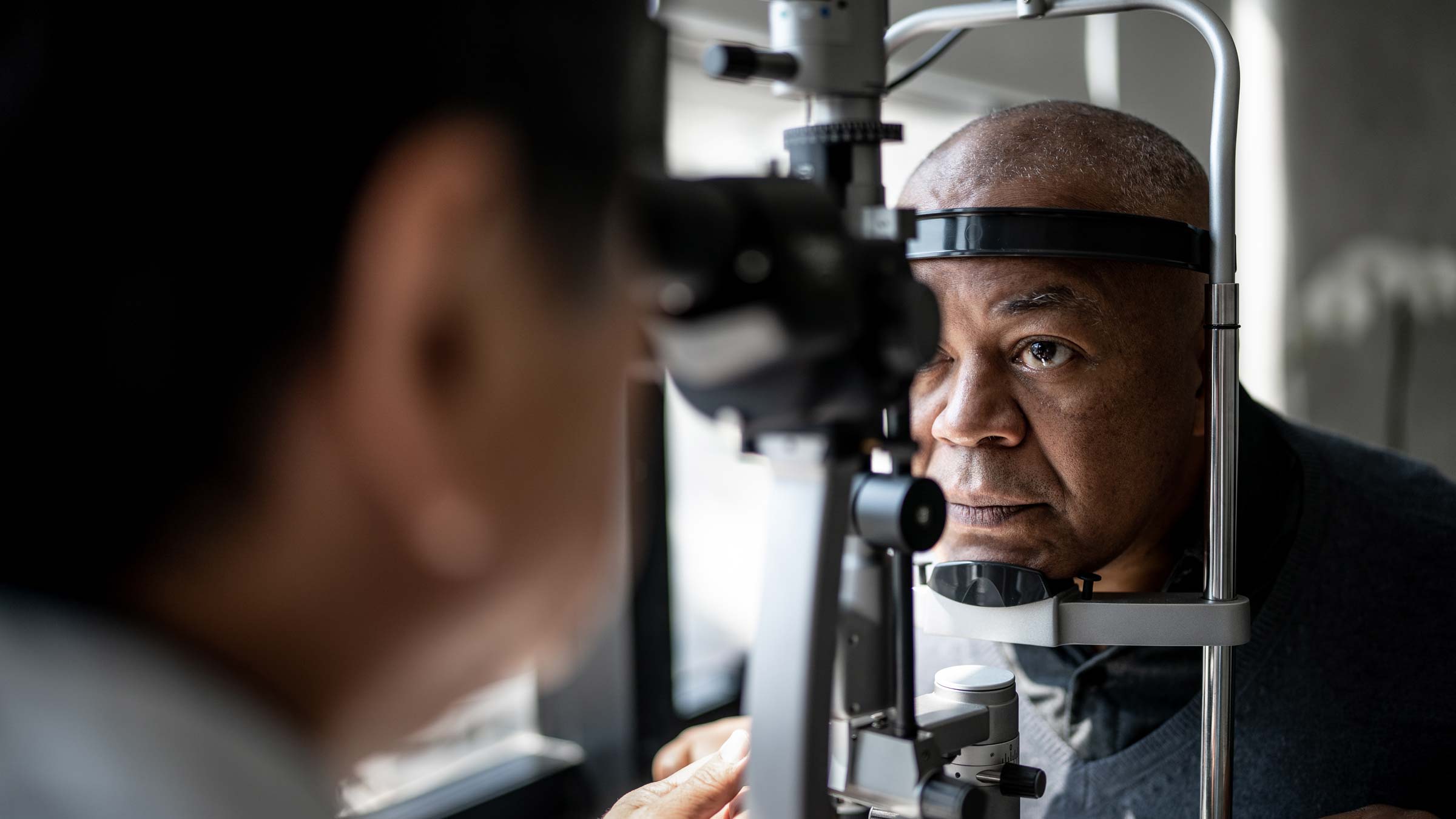
What’s glaucoma?
Glaucoma is a term for a group of incurable eye diseases that generally affect peripheral vision, or side vision, limiting the view of anything not in the direct line of sight. Glaucoma can significantly reduce eyesight, even in people with otherwise perfect vision. In severe cases, glaucoma can cause blindness or leave a person with a field of vision as small as the opening of a straw.
How common is glaucoma?
Glaucoma is a leading cause of vision loss and blindness in both the United States and the world. According to the most recent data from the National Eye Institute, more than 2.7 million people in the United States. had glaucoma in 2010. The agency predicts that nearly 4.3 million Americans will have glaucoma by 2030 and that nearly 6.3 million will have glaucoma by 2050.
Who’s at highest risk for glaucoma?
Risk factors for glaucoma include:
- Being 60 or older
- Having a family history of glaucoma
- Being farsighted or nearsighted
- Having diabetes, migraines or high blood pressure
- Having a previous injury to the eye
- Being Black or African American
- Being Hispanic/Latino
What causes glaucoma?
Glaucoma is caused by damage to the optic nerve in the back of the eye. This nerve is responsible for sending information to the brain, allowing you to see.
Primary open-angle glaucoma, the most common type of glaucoma, happens when there’s a problem with the eye’s drainage system. This increases pressure within the eye, which can place stress on, and eventually damage, the optic nerve.
A less common form of glaucoma is angle-closure glaucoma, which happens when the eye’s drain is blocked by the iris tissue (the colored part of the eye), leading to a rapid increase in pressure.
What are the symptoms of glaucoma?
Primary open-angle glaucoma often has no early symptoms. The first signs may be blind spots in your peripheral vision.
Symptoms of angle-closure glaucoma include sudden, blurred vision; severe pain in the eye; headache; nausea/vomiting; and seeing colored circles or halos around lights. If you experience these symptoms, you likely need emergency care and should contact your eye doctor right away.
How is glaucoma diagnosed?
Glaucoma is detected through an eye exam that involves measuring eye pressure, examining the eye drain and the optic nerve, testing peripheral and central vision and measuring the cornea.
How is glaucoma treated?
While glaucoma can’t be cured at this time, proper treatment based on accurate diagnosis of the type of glaucoma can delay its progressive optic nerve damage and hopefully prevent glaucoma-related blindness. Options for managing the disease include eyedrops, laser therapy and surgical procedures, which all aim to lower eye pressure.
Are there other treatments in development for glaucoma?
Yes. Many researchers are working toward better treatments and, hopefully, eventual cures.
Here at The Ohio State University Wexner Medical Center, our team is pursuing research that would help us identify people who are at risk of developing glaucoma and determine the best medication or surgery for each patient. These projects involve the use of genetics as well as new methods of measuring eye pressure and mapping the drainage systems of eyes with current imaging instruments.
We plan to use artificial intelligence to analyze genetics, eye physiology and imaging to personalize treatment based upon a patient’s individual data to improve outcomes and prevent glaucoma-related blindness.
What can I do to prevent getting glaucoma?
Glaucoma can’t be prevented at this time, but it can be treated to prevent significant vision loss or blindness, if it’s caught in its early stages. To catch glaucoma early, make sure to visit your eye doctor every year for a complete eye exam.

Ready to learn more about eye care?
Ohio State's ophthalmology team provides comprehensive care backed by one of the nation's leading academic health centers.
Expert care starts here




